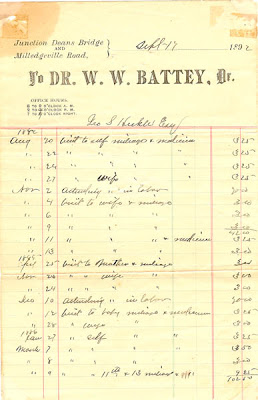
The bald facts are these (NB: because of the glacial speed at which NHS stats are collected and collated, most of the figures are a couple of years out of date):
-
- Numbers- in 2005 there were 32,738 NHS GPs in England, up from 27,465 ten years earlier; however, over those ten years the proportion of part-timers doubled, to about 27%; that largely reflects the rapid growth of female GPs, half of whom are now part-timers (see the Doc for his robust views on that); on a full-time equivalent (FTE) basis, the number of GPs has only increased from 26,114 to 29,248, a rise of 12%.
-
- GPs per head- with a rising population, the number of GPs (FTE) per 100,000 head of population only increased from 54 to 58, an uplift of 7%; put another way, the number of patients per fte GP has decreased from 1852 to 1725.
-
- Practice staff- on a FTE basis, other practice staff increased from 59,255 to 72,990; 73% of them are admin and clerical
- Cost- in 2005-06, the NHS spent £7.7bn on GPs services in England, excluding prescribing costs of a further £7.8bn
So do we get value?
The first point is that the cost of these services has rocketed. And rocketed far more than even the Wanless-pumped government had planned. As blogged many times, the new GPs contract was a financial disaster for taxpayers: the official post-mortem, just published, not only shows spending on GPs services rose by one-third in the two years to 2005-06, but also that it turned out a cumulative £1.7bn over budget (see also this Times article).
Are we getting a commensurately better service?
Highly unlikely when we've lost our traditional out of hours service. But health minister Ben Bradshaw reckons things have improved, and since the NHS has never developed a coherent way of measuring overall output, we can't be absolutely sure he's barking (see recent Wanless update).
Still, we can certainly probe those costs a little more.
With a population of 50.4m (England 2005), the £7.7bn pa cost of GPs works out at £154 each, say £160 at 2007 prices. So for a family of four, that's £640 pa, or £12 per week.
Is that good value against the alternatives?
No, not the alternative of another KFC family meal every week, but the alternative of a private GP. For example, CityDoc offers a twenty minute private GP consultation for £65, or £85 for "more than 30 minutes". When did you last have more than 30 mins with your NHS GP? They just don't have time for that kind of carry on.
So, a family of four could have ten 20 minute visits to City Doc for the annual cost of their NHS GP service. Or maybe eight normal visits, an emergency contraception visit (£40 including medication), and jabs for tetanus, diphtheria, polio, typhoid (see here for full price list). What's more, they still open on Saturdays- 11am to 4pm.
Yes, yes, I know. What if you have something really wrong with you? £640 pa might not cover it. And indeed, it might not. But by the same token, what if you're really well? What if you never need the GP from one year to the next? You'd be quids in.
Clearly, in the real world, you'd buy insurance- an extended version of the private health insurance you can already buy for hospital treatment. We don't really know what that might cost, because the market hasn't yet developed. But judging from the price of private GP consultations, it needn't be prohibitive for most people, at least those of working age.
So relative to their private counterparts, it's not at all obvious that the cost of NHS GPs is a good deal.
History offers another fix on cost and value. Over at The Huntsman (2 September), the H Man himself has been digging into his family history. His father was a fenland GP who started with the NHS in 1955, but, frustrated by all the bureaucracy (even then!), left to go private a decade or so later.
HM has discovered that back in the sixties there were four local GPs serving a population of about 10,000- about 2,500 patients each.
Since then, the population has grown by around 50%. So how many local GPs do you reckon there are today? Six? That would seem about right, but maybe we should allow a couple more to account for the greater complexity of modern medicine and all that screening work. Call it 8 or 9.
The actual answer is a staggering 16. Four times the number of GPs for only 50% more patients!
According to this, when the NHS was launched in 1948, it had around 18,000 GPs in England and Wales, and they were serving a population of 41.5m. The average GP was therefore covering 2,461 patients, about the same as those fenland GPs in the sixties.
Compare that to the average 1,725 patient list now (see above). Not such an extreme change as in the fens, but still 42% more GPs per patient.
Does anyone think we're getting 42% more service? 42% more than when that nice Dr Finlay used to come out all hours of the day and night?
Once again, the NHS has spent vast amounts of taxpayers' money and hugely ramped up costs. But we simply haven't had the service improvements promised.